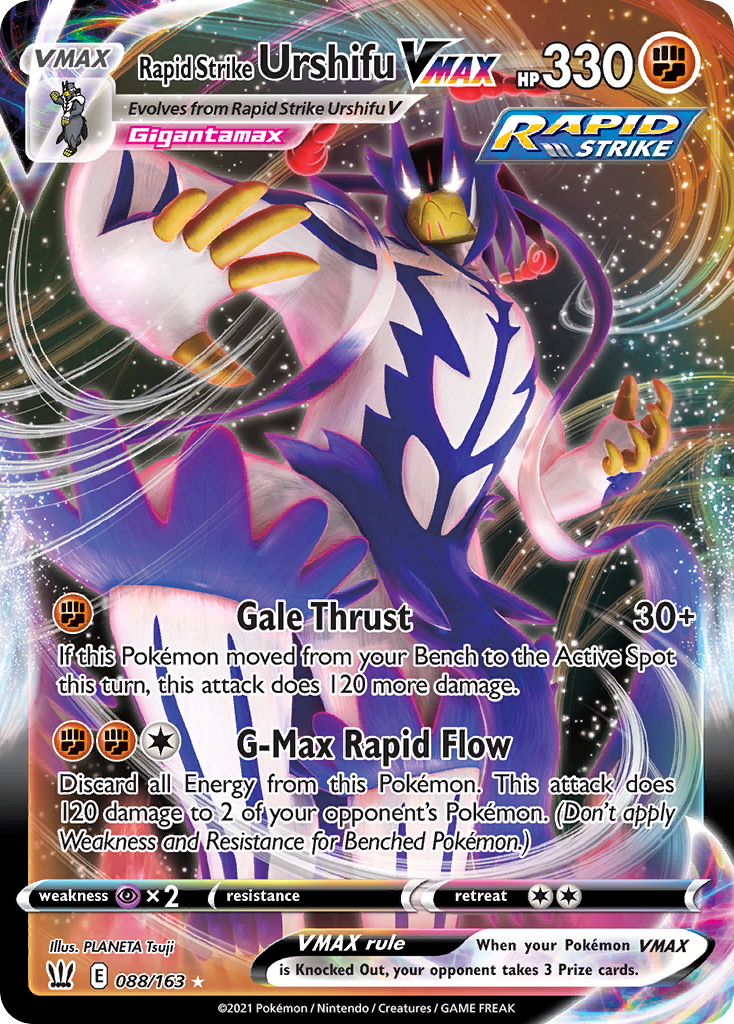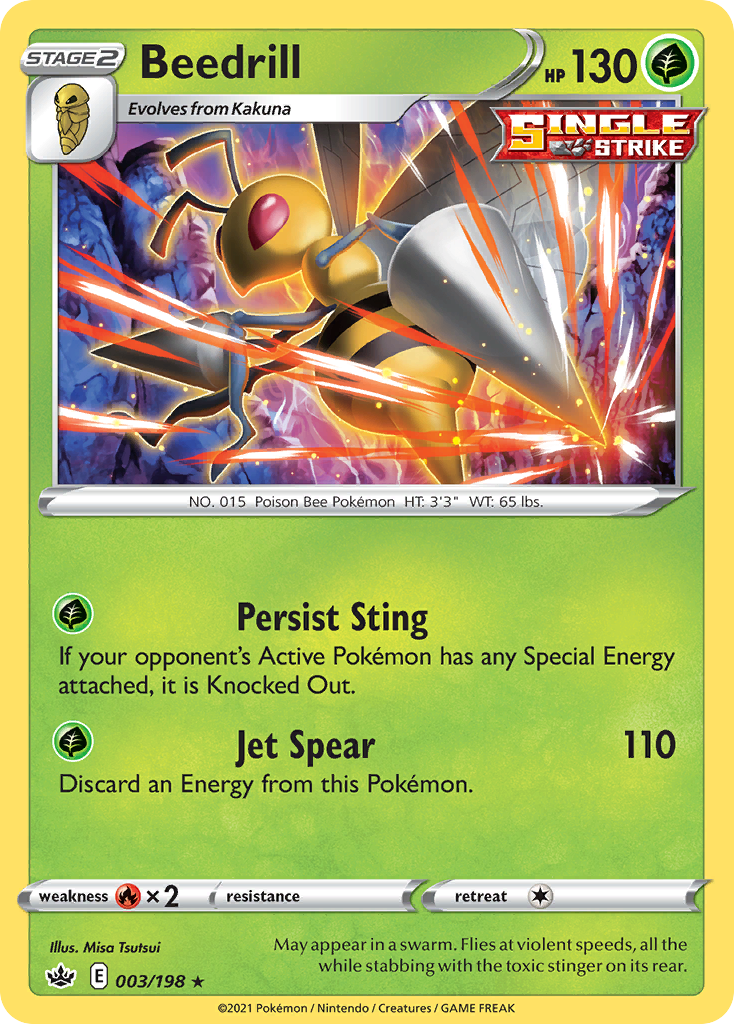Indianapolis Analysis + How To Avoid Getting Stung
Recently, we saw three Regional Championships (one labeled as a Special Event) take place at the same time, including Indianapolis with over 1000 players. I played the event with a fairly standard Arceus VSTAR / Inteleon deck and was only one win away from making Top 8, unfortunately bricking twice in a crucial day two round against a favorable matchup.
Indianapolis Roundup
Overall, Arceus VSTAR completely dominated Indianapolis with 24 of the top 32 spots. The rest of Top 32 were Mew VMAX with one Whimsicott VSTAR. Rapid Strike Urshifu VMAX was basically non-existent at the event despite its dominance at EUIC, though Tord did make second place at Bilbao to follow up his EUIC Top 8. Mike Gibbs had a strong start at Indiana with Rapid Strike Urshifu VMAX but had a rough day two.
It seemed that every Arceus VSTAR deck in Indiana had at least Dunsparce and Manaphy, with many also playing Hoopa V and a recovery card too. This basically forces the Rapid Strike Urshifu VMAX player to be both lucky and good at the game, requirements that few Rapid Strike Urshifu VMAX players were able to fulfill. Due to the enormous target on Rapid Strike Urshifu VMAX's back and the easy access to counter-techs, it was simply the worst time to play this deck. With that said, it's still an incredibly strong deck -- with its lack of popularity or success at Indianapolis, counter-techs will undoubtedly fall off, though not completely disappear. Rapid Strike Urshifu VMAX is still very much in the game for the upcoming Secaucus Regionals.
Beedrill
The big story of the event was Arceus VSTAR / Beedrill. Although Beedrill only had one spot in Top 16, it did place second overall. Furthermore, Beedrill had great overall success relative to the small number of players playing it -- as far as I'm aware, most Beedrill players made day two, however, Alex Wilson barely whiffed due to an unfortunate tie in round nine.
Arceus VSTAR with Beedrill is a simple yet ridiculously effective counter to the meta. Isaiah's second-place list had both Dunsparce and Manaphy to help against Rapid Strike Urshifu VMAX, with Beedrill acting as a deterrent to using Rapid Strike Energy. The other Beedrill lists had Quick Shooting Inteleon instead of Manaphy, which gives the deck a better matchup against Malamar in exchange for being weaker against Rapid Strike Urshifu VMAX. Both versions were fine for the event, as both Rapid Strike Urshifu VMAX and Malamar were not popular at all. If you want to tech for both matchups or neither, you still have those options going forward.
Arceus VSTAR / Beedrill can work like a normal Arceus VSTAR / Inteleon deck, which is already good, it has Beedrill added in, which totally swings the Mew VMAX and Whimsicott VSTAR matchups. Beedrill is also great against other Arceus VSTAR variants, though those matchups are not quite as easy. Arceus VSTAR / Inteleon with Melony is still a bit difficult because they do not rely on Double Turbo Energy quite as much as the others -- because of this, Melony / Arceus VSTAR stock goes up a little.
Arceus VSTAR Toolbox
Of course, Ian Robb ended up winning the event with his one-of-a-kind Arceus VSTAR Toolbox deck. Looking at the deck, it seems precise and demanding -- difficult to play and play against, with many options to work with, it is the picture of a "good player deck." As the meta developed over several weeks since Salt Lake City, many players had written off Ian's Top 8 deck from that event. After several notable upgrades and adaptations, he brought it back to win Indianapolis. Inteleon toolbox decks like this and the one I played at EUIC are so difficult because they constantly present you with many different lines of play. They force you to plan ahead and utilize single-Prizers that make for long and grindy games.
On the other hand, Inteleon toolbox decks are often teched-out at the expense of cutting back on the Inteleon line. This makes them a bit shaky on consistency, though they do have comeback potential as well. The presence of several two-Prize Pokemon can also be a huge liability. You will automatically lose some matchups if you start with the wrong Pokemon.
Although this deck did win the event, I do not expect its popularity to eclipse the likes of Mew VMAX or regular Arceus VSTAR / Inteleon, so you don't necessarily have to even test against it.
On the other hand, I could easily see everyone picking up the Beedrill deck. It's similar enough to the omnipresent Arceus VSTAR / Inteleon, it's not too complicated, and it is so, so good. Beedrill lets you destroy the hordes of Mew VMAX players, and you don't have to gamble on whether or not you need to worry about Whimsicott VSTAR stragglers.
At worst, it's a solid Arceus VSTAR deck, and Arceus VSTAR is broken enough on its own. Going forward, prepare for the bee!
Mew VMAX
Now let's talk about the Psychic-types. Mew VMAX is a deck that continues to see strong but not dominant performances. At this point, it's nothing new, simply a normal part of the environment, however, two Pokémon Catcher-infused lists of Mew VMAX made Top 8 at Indianapolis.
For a few months, Pokemon Catcher had completely disappeared from Mew VMAX lists, and now it's back. This fills me with dread because Meloetta can now target down anything on turn one, and no amount of playing around Escape Rope can save you. I don't know if Pokemon Catcher is necessarily correct in Mew VMAX, as you can usually afford to spend the Supporter for turn on Boss's Orders, but it's certainly more terrifying and annoying to play against.
There's not much we can do about this other than not be too surprised when we get hit by Pokemon Catcher in the future.
Whimsicott VSTAR
Whimsicott VSTAR is the deck that got completely annihilated at Indianapolis, and that fact brings me so much joy. There were many Whimsicott STAR present, but it ended with only one spot in Top 32 at 12th.
This was the worst event to play Whimsicott VSTAR at -- Rapid Strike Urshifu VMAX didn't show up, and everyone teched Manaphy for G-Max Rapid Flow, which coincidentally nullifies Whimsicott VSTAR's preferred game-ender of a VSTAR attack.
After Whimsicott's strong showing at EUIC, many players (including myself) respected and teched for it. -- Mew VMAX players had one or two Psychic Energy, and Arceus VSTAR players had ways to recover basic Energy. On top of all this, Beedrill's sudden appearance gatekept Whimsicott VSTAR from seeing strong day-two finishes. Poor Whimsicott VSTAR had the worst time ever despite being popular, but I don't think anyone feels bad for it -- it will most likely settle in as a mid-Tier 2 deck. You should be able to beat Whimsicott VSTAR, but it's not the end of the world if you have a poor matchup against it.
More on Beedrill
Isaiah and co.'s Beedrill list is good... it's extremely good... but it's not perfect. There are a few edits I want to make to the deck, and I want to discuss it a bit more. I think this deck will be a mainstay in the format going forward, so let's thoroughly dissect it, and I'm also going to briefly go over the deck that I played at Indianapolis. I think the deck I played was great, but the Beedrill one is probably better. The two will look quite different at first, but they are actually quite similar -- the Beedrill one just has a Beedrill mode.
This concludes the public portion of this article.
If you'd like to continue reading, consider purchasing a PokeBeach premium membership! If you're not completely satisfied with your membership, you can request a full refund within 30 days.
Each week we post high-quality content from some of the game's top players. Our article program isn't a corporate operation, advertising front, or for-profit business. We set our prices so that we can pay the game's top players to write the best content for our subscribers. Each article topic is carefully selected, goes through multiple drafts, and is touched up by our editors. We take great pride in our program!



